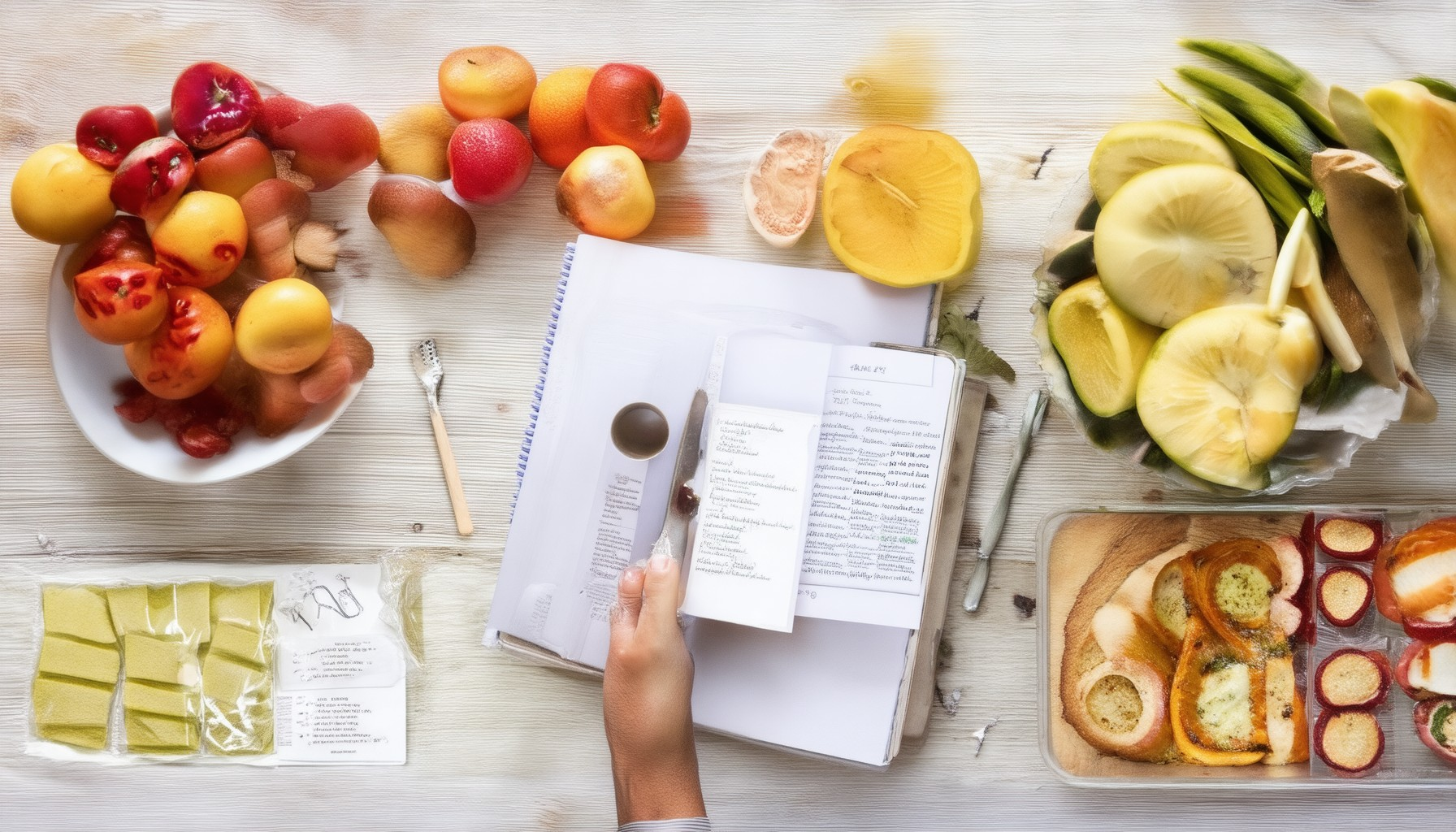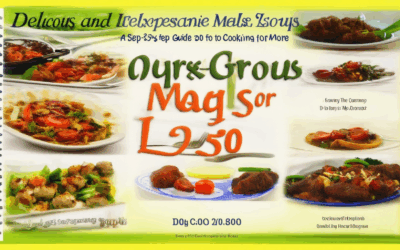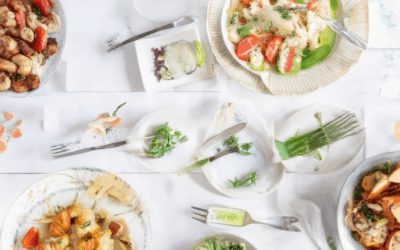Creating a food blog is more than just a hobby—it’s a pathway to passion, purpose, and even profit. For those eager to share their culinary skills, explore unique recipes, and connect with like-minded food enthusiasts, the journey begins with a simple idea: turning your love for food into a thriving online presence. Whether you’re a seasoned home cook or a budding foodie, this guide offers a step-by-step roadmap to launching a food blog that not only stands out but also resonates with your audience. From choosing the right platform to crafting compelling content, mastering SEO, and exploring monetization strategies, we’ll cover everything you need to know to create a food blog that captivates and inspires.
Key Takeaways
- Choose the Right Platform: Select a website builder that aligns with your technical skills and blog goals, prioritizing SEO and customization options.
- Leverage Strong SEO Tools: Opt for platforms with built-in SEO features to enhance your blog’s visibility and ranking potential.
- Build a Consistent Content Strategy: Aim to publish regularly and focus on diverse recipe topics to engage your audience effectively.
- Start with a Strong Recipe Base: Publishing 20 unique recipes in the first 6 months establishes your authority and helps search engines discover your blog.
- Optimize Titles and Descriptions: Use keyword-rich metadata to improve your chances of appearing in search results.
- Enhance Visual Appeal: High-quality images and detailed recipe guides increase engagement and encourage social sharing.
- Develop a Robust Social Media Presence: Actively promote your content to attract followers and foster a loyal community.
- Attract Advertisers with a Large Recipe Collection: A varied recipe base attracts more opportunities for monetization through ads and sponsorships.
- Maintain Consistency for Long-Term Success: Regular updates and a steady content schedule build trust and keep your blog competitive over time.

Do Food Bloggers Make Money?
Yes, food bloggers can definitely make money through various methods. Here’s a breakdown of how they monetize their platforms:
- Affiliate Marketing : Food bloggers often partner with brands to promote products like cookware, ingredients, or kitchen gadgets. They earn commissions when readers click on affiliate links and purchase items.
- Sponsored Content : Many food bloggers accept sponsored posts, where brands pay them to create content promoting their products. This can include recipe reviews, meal prep ideas, or ingredient spotlights.
- Product Endorsements : Bloggers may also be hired as brand ambassadors or influencers to endorse specific products. This could involve appearances in videos, social media campaigns, or promotional materials.
- Creating Their Own Products : Some food bloggers develop their own products, such as cookbooks, meal kits, or subscription boxes, and sell them directly to their audience.
- Advertising Revenue : Bloggers can display ads on their websites or YouTube channels. These can be traditional banner ads or affiliate-based ads that promote relevant products.
- Subscription Models : A few bloggers offer premium content through subscriptions, such as exclusive recipes or video tutorials, generating recurring revenue.
- Affiliate Networks : Joining affiliate networks like Amazon Associates, ShareASale, or niche-specific programs allows bloggers to earn commissions on a wider range of products.
- Influencer Marketing : Companies often collaborate with food bloggers for influencer marketing campaigns, paying them to promote products in social media posts, stories, or videos.
- Teaching and Consulting : Bloggers with expertise in cooking or nutrition can offer consulting services, lead cooking classes, or host virtual workshops.
- YouTube Channels and Social Media : Many food bloggers also monetize through YouTube channels, ad revenue on social media platforms, and sponsorships.
By leveraging these strategies, food bloggers can build a sustainable income stream while sharing their passion for food with their audience.
How to Create a Food Blog
- Choose Your Niche : Decide what type of food you’re passionate about. Whether it’s vegan recipes, international cuisine, baking, or meal prep, sticking to a specific niche will help you attract dedicated followers.
- Plan Your Content : Before diving in, outline your blog’s structure. Consider topics like recipe tutorials, ingredient guides, kitchen hacks, and behind-the-scenes content about your cooking process.
- Set Up Your Blog Platform : Select a blogging platform like WordPress, Blogger, or Medium. Customize your template to match your branding and make it visually appealing.
- Optimize for SEO : Use keywords related to your niche to improve your blog’s visibility. Research tools like Google Keyword Planner or SEMrush to find popular search terms. Optimize your titles, descriptions, and alt texts for better search engine ranking.
- Start Publishing Recipes : Begin sharing your creations with high-quality images, detailed ingredients, and easy-to-follow instructions. Keep your posts organized with clear headings and bullet points for better readability.
- Monetize Your Blog : Once you have a steady audience, explore monetization options like displaying ads, becoming an affiliate marketer, or collaborating with brands for sponsored posts.
- Build a Community : Engage with your readers by responding to comments and starting discussions. Encourage them to share your recipes on social media using your blog’s unique link.
- Promote Your Blog : Share your posts on social media platforms, join food-related communities, and participate in challenges to increase your blog’s reach. Consider creating a YouTube channel or an email newsletter to further grow your audience.
By following these steps, you can create a successful food blog that resonates with your audience and stands out in the competitive world of food content creation.

Is Starting a Food Blog Worth It?
Deciding whether to start a food blog involves evaluating its potential benefits and challenges. Here’s a breakdown of factors to consider:
Pros of Starting a Food Blog
- Passion and Creativity:** Share your love for cooking, baking, or culinary exploration. A food blog allows you to showcase your creativity and passion for all things food-related.
- Personal Growth:** Enhance your cooking skills, photography, and writing abilities by consistently creating high-quality content.
- Building a Portfolio:** A food blog serves as an excellent portfolio, especially if you aim to work in food media, catering, or hospitality.
- Networking Opportunities:** Connect with fellow food enthusiasts, chefs, and professionals in the industry. Engage with your audience and build relationships that could open doors to exciting opportunities.
- Monetization Potential:** Once established, you can earn through affiliate marketing, sponsored posts, and advertising revenue.
- Documentation of Culinary Journeys:** Keep track of your favorite recipes, cooking techniques, and dining experiences for future reference and sharing.
Considerations Before Starting a Food Blog
- Time Commitment:** Running a successful blog requires consistent effort, including recipe development, photography, writing, and engagement with your audience.
- Competition:** The food blogging space is competitive, so standing out requires unique content, high-quality images, and innovative ideas.
- Learning Curve:** Mastering photography, editing, SEO, and social media management takes time and effort.
- Maintaining Authenticity:** Stay true to yourself and your style to build trust with your audience, rather than chasing trends for popularity’s sake.
Ultimately, the decision to start a food blog hinges on your passion for food, your willingness to commit time and effort, and your goals for building a meaningful online presence. With dedication and consistency, you can create a blog that not only reflects your culinary journey but also connects with others who share your love for food.

The Best Website Builders for Starting a Food Blog
When deciding the best website builder for your food blog, it’s essential to consider factors like ease of use, customization options, SEO capabilities, and community support. Here are the top platforms recommended:
- WordPress : Known for its flexibility and extensive plugin library, WordPress is ideal for those seeking advanced customization. Its vast array of themes, including food-specific ones, allows you to create a visually appealing and functional blog. With plugins like Yoast SEO, it excels in optimizing your content for search engines.
- Squarespace : Offers a user-friendly interface with modern templates. While it may not have as many specialized themes as WordPress, its design options are sufficient for creating an attractive food blog. Squarespace provides decent SEO tools and is known for its excellent customer support.
- Medium : Great for storytelling and minimalist design, Medium is perfect if you prefer a distraction-free writing experience. However, it lacks extensive customization options compared to WordPress or Squarespace.
- Blogger : A free platform by Google, Blogger is simple to use and integrates seamlessly with other Google services. It’s less customizable than WordPress but offers a clean and organized interface.
- Tumblr : Ideal for niche audiences, Tumblr allows for creative expression through multimedia and reblogs. However, it may not be as robust as WordPress or Squarespace for building a comprehensive food blog.
Choose WordPress for its versatility and extensive features, or opt for Squarespace for simplicity and elegance. Depending on your technical proficiency and specific needs, either platform can help you create a successful food blog. Explore additional options like Medium or Blogger if they align better with your preferences.
Do Food Bloggers Get Free Food?
Food bloggers often collaborate with restaurants, brands, and companies to promote products or experiences. In some cases, these partnerships may include receiving free food as part of the collaboration. However, this varies widely depending on the blogger’s audience, influence, and the nature of the partnership.
- Many food bloggers work with restaurants to review their dishes or menu items, which sometimes includes complimentary meals.
- Brands and food companies may offer free samples or full products for bloggers to test and share on their platforms.
- Some bloggers participate in events or press trips hosted by companies, where travel, accommodation, and meals are covered.
- Collaborations with food brands or chefs can also result in bloggers receiving free ingredients or cooking tools to create recipes.
While not all food bloggers receive free food regularly, those with larger audiences or established reputations may have more opportunities for such collaborations. It’s important to note that when bloggers do receive free products, they typically disclose this in accordance with regulations like FTC guidelines to maintain transparency with their audience.

How Many Recipes Do You Need to Start a Food Blog?
To successfully launch and grow your food blog, it’s essential to establish a consistent content strategy. Here’s a breakdown of what you need:
- Initial Content Goal : Aim to publish at least 20 high-quality, unique recipes within your first 6 months . This establishes your presence and helps search engines recognize your blog as a reliable source.
- Content Strategy :
- Frequency : Post 3 recipes per month , focusing on a variety of cuisines, dietary preferences, and occasions.
- SEO Optimization : Use keyword-rich titles and descriptions to improve your search engine rankings. Tools like Google Keyword Planner can help identify trending topics.
- Visual Appeal : Invest in high-quality images and videos to captivate readers and encourage social shares. Step-by-step visuals can enhance understanding and engagement.
- Audience Building : Promote your content across social media platforms to attract followers. Engage with your audience through comments and discussions to foster a loyal community.
- Monetization Potential : A robust recipe collection attracts advertisers and affiliate programs. More content increases earning opportunities through ads and sponsorships.
- Long-Term Growth : Consistency builds trust and credibility. Sustaining content creation ensures your blog remains relevant and competitive over time.
By following this structured approach, you can build a thriving food blog that resonates with readers and achieves your goals.





0 Comments